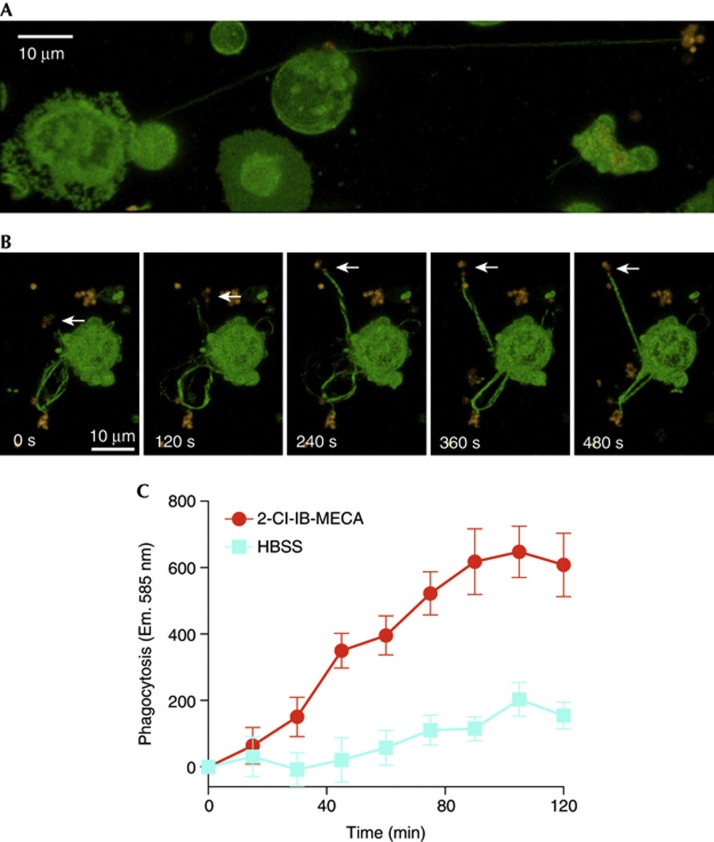Figure 5.
Neutrophil nanotubes enable the targeted, long-distance sampling/capture of pathogens. (A) Confocal imaging of Vybrant DiO-stained neutrophils that were exposed to SYTO 83-stained H. pylori revealed that cytonemes enable neutrophils to sample/capture bacteria up to 100 μm away from the cell. In addition, time-lapse imaging revealed that neutrophils are capable of simultaneously extending several cytonemes and capturing several pathogens at a time. (B) The spatial adaptation of cytonemes in relation to the position of motile bacteria (for example, the H. pylori cluster highlighted with white arrows) suggests that cytonemes are capable of adapting to changing spatio-temporal signals. See also supplementary Video S3 online. (C) Activation of A3ARs with 2-Cl-IB-MECA enhanced the ability of human neutrophils to phagocytose fluorescent S. aureus bioparticles. Data shown are means±s.e.m. of three individual experiments. Y axis shows relative intensity units. A3AR, A3-adenosine receptor; HBSS, Hank’s Buffered Salt Solution; 2-Cl-IB-MECA, 2-chloro-N6-(3-iodobenzyl)adenosine-5′-N-methylcarboxamide.

